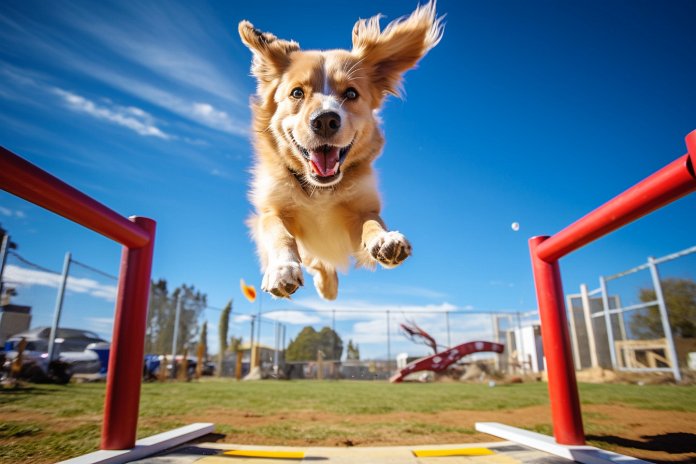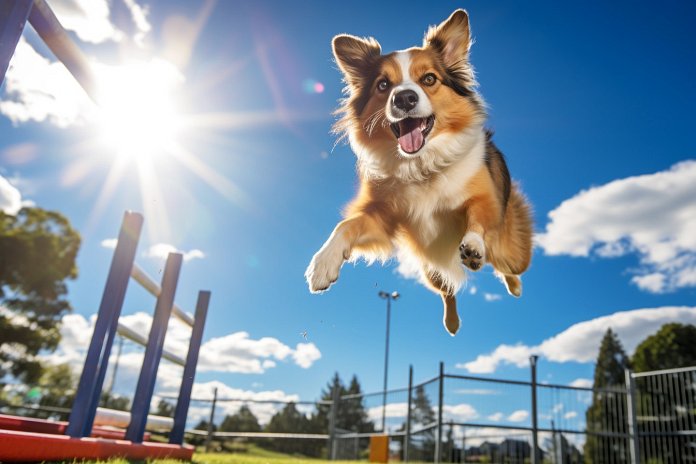
We’ve all heard the old saying, “you can’t teach an old dog new tricks.” Is that really true?
Just like humans still have the capacity to learn at any age, dogs are able to continue to learn into their senior years. The main problem people have when training older dogs is that they are attempting to break bad habits and replace them with new, better habits.
Retraining a dog is much more complicated than training a dog the correct way the first time. It is important when retraining a dog to remember that it is going to take additional time to correct bad behaviors. Let’s take a look at just how you can work on retraining your dog.
Signs Your Dog Needs to be Retrained
Many rescue dogs or dogs that are adopted later in life have picked up on some bad habits throughout their lives. This can be attributed to a number of different things, but often, the dogs were never properly trained in the first place or experienced such traumatic abuse that they no longer remember appropriate social behavior. In any of these cases, it is important for the owner to establish clear rules and boundaries for the dog and to start training to prevent further problems with the dog.
Common bad behaviors that dogs need to be retrained on include barking and whining, aggression, walking on a leash, jumping, and destroying things in your home. Any of these behaviors could get you and your dog in a seriously dangerous situation and should be addressed.
In general, people want their dogs to be polite and easy to own. Dogs that are loud or get into mischief can cause problems for dog owners, so many training courses are designed to quell these bad behaviors. If you notice your dog displaying behaviors such as aggression, barking, howling, jumping, and biting, you will probably want to get your dog retrained to prevent noise complaints from or injuries to those who you are around you. Here are some body language traits that show you that your dog needs retraining.
Body Language
Here are some major cues your dog will give you if they need a training refresher:
Barking
Digging
Jumping Up
Howling
Other Signs
There are other signs that your dog needs to be retrained. Here are a couple:
Destructive Behavior
Hyperactivity
Inappropriate Fear
Biting Or Nipping
History of Training and Retraining Dogs
Before World War I, there is little documentation available about formal dog training. While it is obvious that people were training dogs before this time, based on the use of dogs for transportation and hunting in early centuries, not much is known about those training methods. When it comes to obedience training, humans didn’t start trying to train dogs to act as companions until much more recently, so the training we do today probably wasn’t considered necessary.
During WWI, members of the military trained dogs to assist in combat. This is the first time that formal dog training was documented, and lots of dogs were being trained to help because many dogs were being killed in war. The need for a vast quantity of dogs led to intense training sessions. Not all breeds of dogs could keep up with the rigorous training, which led people to believe that certain breeds of dogs weren’t trainable.
After the war, military trainers were discharged; and with more families working outside of the home, dogs were being left to their own devices and getting into mischief. This led to dog owners seeking out training and numerous people who were well-versed in dog training.
By the 1970s, obedience training was more widely available, and ever since then, people have been using dog training to make life with their dog easier.
Science Behind Being Able to Retrain Dogs
Dog training has been called both an art and a science, and in a way, it truly is both. After studying canine behavior, scientists learned that dogs understand favorable outcomes and will more frequently perform actions that lead to favorable outcomes in the future. Humans have learned that while dogs control their own behavior, we can influence their choices in our favor.
Even dogs who have learned bad behaviors can understand what is called the Learning Theory. When something good happens to a dog after a behavior, they will repeat it. When nothing happens after an action, the dog does it less often. Over time, the dog will lose interest in the behaviors that don’t have a positive outcome for them.
Dogs who have already learned bad behaviors, such as jumping, biting, and barking, will eventually give you the same results as dogs learning for the first time, but it will take longer. Breaking bad habits doesn’t happen overnight.
Retraining Your Dog
When it comes to retraining your dog, you will need to exercise extreme patience. Remember that your dog was taught that these bad behaviors were acceptable, and now they are being told otherwise, and that can be extremely confusing. You are now going to have to break bad habits that your dog has been accustomed to for a long time.
When your dog jumps on your leg, for instance, you can turn away from your dog and provide no attention. This reaction, or lack thereof, to a bad behavior doesn’t give your dog what they want. Over time, your dog will realize that this behavior will not illicit the reaction he or she wants it to and give it up.
In addition to not feeding bad habits, you need to reward positive behaviors, which means you should constantly have treats nearby. If your dog meets a new person and doesn’t jump on them, you should provide praise and a treat. This helps the dog learn that not jumping is good and jumping is bad.
While this training can take a long time and can be very frustrating, it will eventually help your dog break their bad behaviors. If you are struggling with training, consider getting a professional trainer to help you. A professional dog trainer has even more insight into the tricks that could help you turn your problem dog into a well-behaved delight.
“Patience and consistency are key when retraining your dog.”

Tips & Things to Know
1️⃣ An old dog can indeed learn new tricks, or more specifically, get rid of old, bad habits. This process, however, is more complex and time-consuming than training a dog properly from the start, so patience is key.
2️⃣ Signs that your dog needs to be retrained can include behaviors like barking, whining, aggression, jumping, and destroying things. Body language cues such as digging, howling, and hyperactivity, along with inappropriate fear or biting, are also signs that the dog might need retraining.
3️⃣ Retraining involves a combination of not rewarding bad behaviors and rewarding good ones. For instance, if a dog jumps on you, ignore them, but if they meet someone new without jumping, give them a treat and praise. If you’re struggling with retraining, consider getting help from a professional dog trainer.
Frequently Asked Questions, Answered ✅
1. What are some common bad behaviors that dogs may need to be retrained on?
– Barking and whining, aggression, walking on a leash, jumping, and destroying things in your home.
2. How can you tell if your dog needs to be retrained?
– Look for signs such as aggression, barking, howling, jumping, and biting, as well as destructive behavior, hyperactivity, inappropriate fear, and biting or nipping.
3. What is the history of dog training and retraining?
– Formal dog training was documented during World War I when dogs were trained to assist in combat. After the war, dog owners sought training due to dogs being left to their own devices. Obedience training became more widely available in the 1970s.
4. What is the science behind being able to retrain dogs?
– Dogs understand favorable outcomes and will repeat actions that lead to favorable outcomes. They can learn the Learning Theory, where they repeat behaviors that result in something good happening and lose interest in behaviors that don’t have positive outcomes.
5. How can you retrain your dog?
– Retraining requires patience and breaking bad habits that your dog has been accustomed to. You can discourage bad behaviors by not giving attention or rewards, and reward positive behaviors with praise and treats. Consider seeking help from a professional dog trainer if needed.